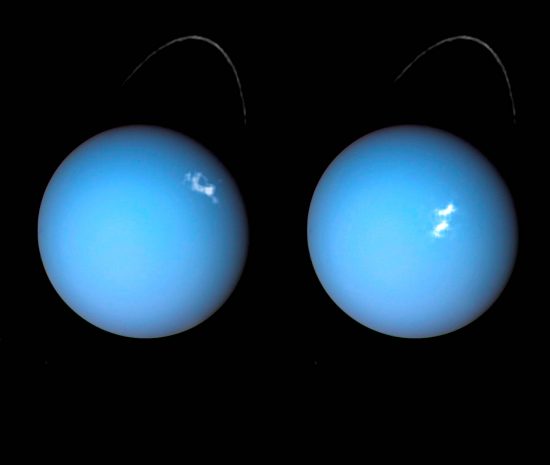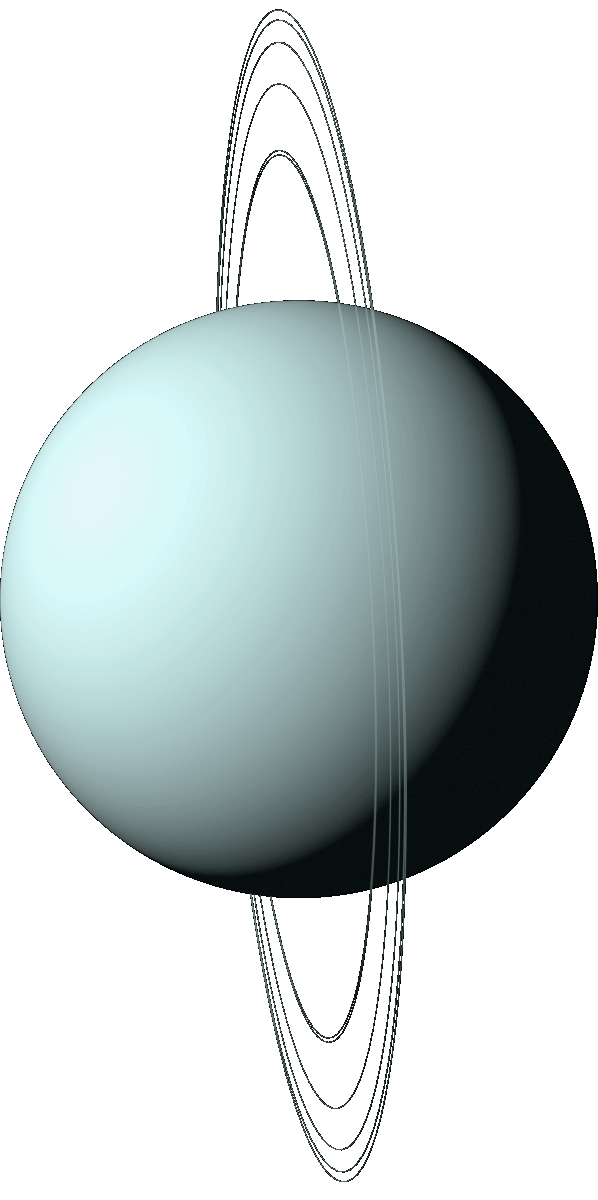
Combined image of Uranus from Voyager 2 and the Hubble Space Telescope. Credit: ESA/Hubble & NASA, L. Lamy/Observatoire de Paris.
Jun 26, 2017
Planetary magnetospheres are electrical phenomena.
The mainstream theory of magnetic reconnection is a common “explanation” for Earth’s aurorae. As the consensus view states, the magnetosphere surrounding Earth stretches and deforms like a teardrop, because it is being bombarded by a powerful stream of charged particles from the Sun. As the field is pushed on the sunward side, it is stretched out on the other side of our planet, where the field lines are said to “unravel” and “flap like a flag waving in the wind.”
It is thought that those magnetic field lines cross and “reconnect” through some unknown mechanism, which causes them to detonate, releasing large quantities of heat, light and electrical energy. That power flows down the field lines into Earth’s poles, where it causes the air molecules to glow. The potential energy that ignites aurorae is said to be “stored” in magnetic field lines.
Recently, astronomers studying data from Voyager 2 (now at the edge of the Solar System’s heliospheric boundary) announced that they believe magnetic reconnection is affecting Uranus in a similar fashion.
Carol Paty from Georgia Tech university wrote:
“Uranus is a geometric nightmare. The magnetic field tumbles very fast, like a child cartwheeling down a hill head over heels. When the magnetized solar wind meets this tumbling field in the right way, it can reconnect and Uranus’ magnetosphere goes from open to closed to open on a daily basis.”
Astronomers are not able to measure the magnetosphere surrounding Uranus, since it is 3 billion kilometers from the Sun. Their only recourse is to create simulations based on their beliefs and then use data to see if those assumptions are correct. As previously written, results from computer models based on presumptions are bound to deliver foregone conclusions.
The reliance on reconnecting magnetic field lines remains a mystery to Electric Universe advocates, since they are representations of an electromagnetic continuum. Magnetic field lines cannot be the storehouse for magnetic energy because they are no more real than the arrows that are used to describe an electric field, or lines of latitude and longitude on a globe—they are character symbols, just as magnetic field lines are symbols that describe a magnetic field’s schematic. To say that they can cross, or flap, or break and reconnect is tantamount to saying that low pressure weather diagrams can produce rain.
In 1903 Kristian Birkeland proposed that electricity powers Earth’s aurorae. Since electric charge moves through a closed circuit, and the auroral glow seemed to be caused by processes in space, he theorized that the circuit’s beginning came down from space at one end of the auroral arc and looped back out to space on the other end. Birkeland’s research predicted the electric currents that link Earth with space, so they are named for him: Birkeland currents.
It is a mistake to rely on a reified theoretical entity called “magnetic reconnection”, when the forces and effects can be easily associated with solid evidentiary conclusions. Rather than electromagnetism acting in ways that are beyond the prevailing theories, why not use the evidence gathered by Birkeland more than a century ago as the explanation? Just as Birkeland currents power Earth’s electromagnetic phenomena, why not those on Uranus?
The ionized solar wind is extremely diffuse in the distant regions where the gas giants reside. However, because Uranus possesses an extremely powerful magnetic field, it is able to align that charge flow, creating filaments that increase the charge density. That effect creates increased electromagnetism that further increases the electric flux, thus energizing its magnetosphere.
Stephen Smith


